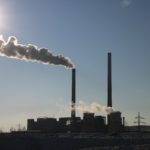The AFOLU (Agriculture, Forestry and Other Land Use) sector emissions in 2005 were 254.11 MtCO2e. They remained fairly flat through to 2015, and had actually declined to 241.96 MtCO2e. Per capita emissions from the AFOLU sector declined from 0.23 tCO2e in 2005 to 0.19 tCO2e in 2015.
If one was only concerned with emissions, then these numbers appear good. However, this is in the backdrop of gradually falling population of livestock and stagnant production of rice, the two biggest contributors towards emissions from the AFOLU sector. Further, this is also in the backdrop of growing agrarian distress in India, where the rural workforce is caught between falling incomes and rising indebtedness.
Thus, the emissions from the AFOLU sector in India are another dimension of the stagnation of the agrarian economy of India. Alongwith this, there is increasing evidence that business as usual practices in Indian agriculture are leading to environmental impacts such as ground water depletion and air pollution that are becoming increasingly difficult to sustain.
In this situation, perhaps the way forward for Indian agriculture is to look at opportunities for higher growth of productivity and incomes without a corresponding increase in its climatic or environmental footprint.
There is an urgent need for initiatives that promote more water efficient rice production, which will also lead to lower methane emissions, along with more efficient crop harvesting and sowing techniques. As far as livestock is concerned, ongoing programmes for improved breeds need to be scaled up, so that people can produce more with lower population of animals, and feed them better so that their emissions due to enteric fermentation are reduced.
Indian agriculture stands at a cross roads today. Effective interventions are needed now to ensure that is moves towards a higher productivity and lower climatic and environmental impact pathway.













